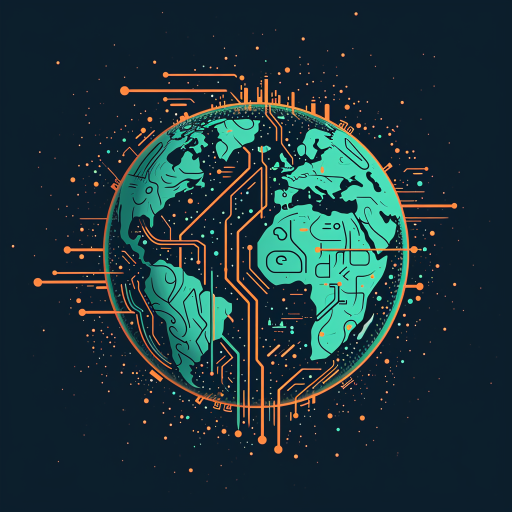Geocoder-AI-powered geocoding and mapping.
AI-Powered Geocoding and Mapping Tool.
How do I convert an address to coordinates?
What is reverse geocoding?
Estimate the address where this photo was taken?
Explain the difference between geocoding and reverse geocoding.
Related Tools
Load More
EarthGPT - Maps, Satellite Images, Geography
Explore planet earth using maps and satellite images right within ChatGPT.
What is this place?
I can quickly provide insights and facts about any location worldwide by image or photo

GeoGuesserGPT
Upload a picture and I'll analyze it better than any GeoGuesser Expert, crafting a clever guess to reveal where it was taken. Try GeoGuesserGPT and I'll pinpoint the spot with surprising insight!

GeoGPT
A scholarly geography resource with extensive knowledge from books and papers.

G Maps Scrapper
Free Guides on Google Maps data scraping

Geo Guesser
A visual analysis expert who guesses image locations.
20.0 / 5 (200 votes)
Introduction to Geocoder
Geocoder is a sophisticated tool designed to translate geographical data between different forms, such as converting addresses into coordinates (geocoding), turning coordinates back into addresses (reverse geocoding), and even interpreting images to extract location information. The primary purpose of Geocoder is to facilitate the integration of spatial data into various applications, enhancing the ability to understand, visualize, and utilize geographical information. By providing a bridge between raw spatial data and human-readable formats, Geocoder supports a wide range of industries including logistics, real estate, and location-based services. For example, a delivery service might use Geocoder to convert customer addresses into precise coordinates for route optimization, while a photo-sharing app could utilize it to tag images with location data extracted from embedded GPS metadata.

Main Functions of Geocoder
Geocoding
Example
Converting an address like '1600 Amphitheatre Parkway, Mountain View, CA' into latitude and longitude coordinates.
Scenario
A ride-sharing company uses geocoding to transform pick-up and drop-off addresses entered by users into coordinates, which are then used to navigate drivers efficiently to their destinations.
Reverse Geocoding
Example
Turning coordinates such as (37.4219999, -122.0840575) into a readable address or location name.
Scenario
An emergency response system employs reverse geocoding to translate GPS coordinates from a caller’s mobile device into a street address, enabling responders to quickly locate the caller in urgent situations.
Image-based Geospatial Analysis
Example
Extracting location coordinates from the metadata of an image taken on a smartphone.
Scenario
A social media platform can automatically tag photos with locations based on GPS metadata, helping users organize and share their images by place, without requiring manual input.
Ideal Users of Geocoder Services
Logistics and Delivery Companies
These companies rely on precise location data to optimize delivery routes, minimize travel times, and improve customer satisfaction. By using Geocoder, they can convert delivery addresses into coordinates for better route planning, ensuring that drivers can navigate directly to delivery points, thereby reducing operational costs and enhancing efficiency.
Developers of Location-Based Applications
Developers creating apps that require location awareness, such as navigation, real estate, or event discovery apps, benefit from Geocoder’s services. For instance, a real estate app can use geocoding to show properties on a map based on user-entered addresses, while a navigation app can reverse geocode user locations to provide address-based navigation prompts.

How to Use Geocoder
1
Visit aichatonline.org for a free trial without login; no need for ChatGPT Plus.
2
Select the Geocoder tool from the available AI-powered tools on the platform.
3
Input your data; enter an address, coordinates, or upload an image to extract geographical information.
4
Customize your query settings if needed, such as choosing the output format (coordinates, address, etc.).
5
Click 'Submit' to process your request and receive the geospatial data. Review the output and use it for your needs.
Try other advanced and practical GPTs
【顔固定】 2~3頭身キャラ作成 アニメ風
AI-powered anime character creation

記事要約
AI-Powered Summarization for Clearer Insights.

紫砂网销
AI-powered pottery sales optimization

机器国 · 角色一致性画师
AI-powered tool for consistent character creation.

林嫣然
AI-Powered, Unfiltered Wisdom at Your Fingertips.

なんJクソスレ・シミュレーター
AI-powered tool for generating なんJ threads.

The Zero Coder
AI-Powered PHP Code, Ready to Deploy.

GPT 한글응답기
AI-powered Korean language responses

Proposta 99Freela
AI-powered proposal generator for freelancers.

README Creator
AI-Powered README Creation Simplified

Podcast Summarizer - Pro
Transforming Podcasts into Insightful Summaries with AI.

周易预测·梅花易数-beta
AI-Driven Insights and Predictions.

- Research
- Data Analysis
- Navigation
- Mapping
- Geocoding
Frequently Asked Questions about Geocoder
What is Geocoder, and how does it work?
Geocoder is an AI-powered tool that converts addresses into geographical coordinates and vice versa. It can also extract location data from images, using advanced algorithms to interpret both text and visual location data.
Can Geocoder analyze images to provide coordinates?
Yes, Geocoder can analyze images containing geographical markers, landmarks, or other location-specific features to provide accurate coordinates or address data.
What are common use cases for Geocoder?
Geocoder is commonly used for mapping and navigation, location-based data analysis, logistics optimization, real estate research, and academic research involving geospatial data.
Do I need any special software or plugins to use Geocoder?
No special software or plugins are required. Geocoder is accessible online through a web browser, and all processing is done via the platform.
How accurate is the geospatial data provided by Geocoder?
Geocoder uses advanced AI algorithms to provide high accuracy in geospatial data, but accuracy may vary based on the quality of the input data, such as image resolution or completeness of address details.